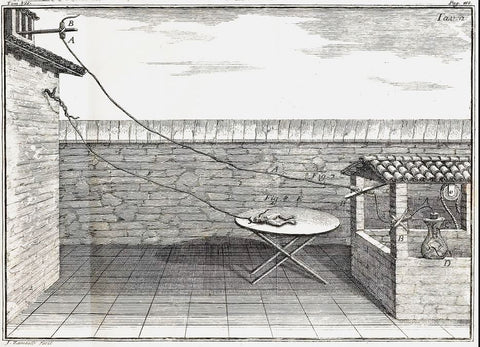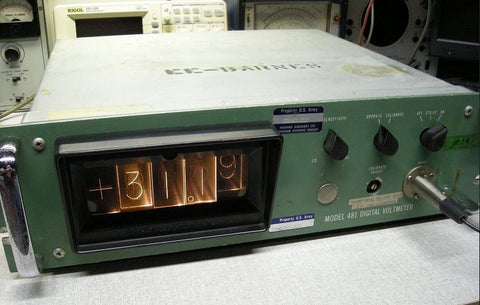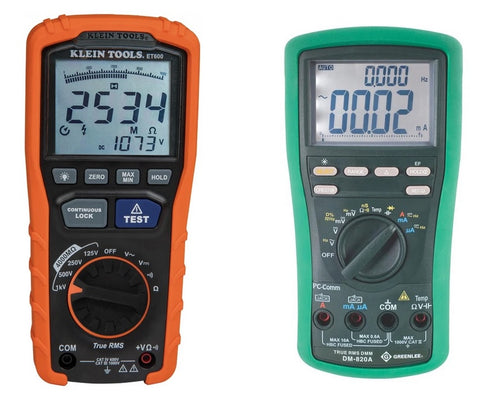A Century of Innovation - The History of the Multimeter
One of the most useful and essential tools for any electrician and probably many handymen is the multimeter. Multimeters are a relatively new technology, barely 100 years old, but newer still are compact multimeters loaded with features. While there have been some compact multimeters even in the early days, having a compact and portable tool capable of multiple electrical and other diagnoses is only something that happened within the past 40 years. Widespread use of electricity for Americans began in the early 1900s so to have a single tool to troubleshoot electrical issues was something of a priority as the early days required several different tools for diagnoses. But where did the first multimeter come from and how has this tool changed?
The invention of the very first multimeter is credited to British Post Office engineer, Donald Macadie, who came up with the tool in 1920 and even made some changes not long after his first patent. He was apparently frustrated with the need to carry a bunch of separate tools for working on telecom lines and this led him to create a single tool that could measure amps, volts and ohms helping it gain the name “Avometer.” This first multimeter was based upon or at the very least inspired by an older instrument called the galvanometer. The galvanometer arrived 100 years earlier in 1820 and was merely designed to detect electrical current and cause a compass needle to move. The galvanometer invented by Hans Christian Ørsted and was named after Luigi Galvani. One of the things Galvani is famous for is using electricity to move the legs of a dead frog in 1791 which was of course one of the chief inspirations for Frankenstein. Turns out that the frog leg thing is also a great (and kinda gross) STEM experiment for kids. This early equipment invented by Macadie was an essential first step towards better test equipment that could handle more jobs.
After the first multimeter appeared in 1920, the technology advanced somewhat quickly. To start, a number of very basic pocket watch-sized volt amp test meters were available almost right away. These were of course extremely limited in their abilities. Most of the full sized early Avometer/multimeters were quite clunky and it wasn’t terribly long before these multimeters shrunk in size so that by the 1930s some smaller and more portable multimeters with more range and features were available. To give you a comparison of the value today’s multimeters provide with their many features, the limited multimeters of the 1930s sold for about $31 – approximately equivalent to $500 today! The size of the multimeter wasn’t the only thing to change, earlier multimeters measured direct current, resistance and voltage in 13 different ranges, but when Westinghouse introduced the “copper oxide instrument rectifier” the Universal meter was made. The Universal meter featured the ability to measure alternating current and boosted the ranges from 13 to 20. As you can imagine, the size of multimeters continued to shrink and gain more features as time progressed.
There was so much change throughout the years that you could probably write a book about it, and someone probably has, but the best way to see for yourself is to checkout these fine resources for how these amazing tools changed. Richard’s Radios is probably the most comprehensive as it covers the original Avometer from 1923 and contains examples made all the way through 2008. It should be noted that these are not digital meters and even the most recent models look like older designs. The site is a treasure trove though if you want technical details and images. Supreme Instruments shares how the multimeters manufactured by the long defunct company of the same name changed from the 30s and through the 40s and their history is interesting as well. The 1950s brought the first digital displays which look like something out of a dieselpunk story. These first primitive digital displays soon gave way to the more efficient electronic style displays that we see today and from the 1950s to the 1980s, you can see how the technology evolved to the compact multimeter you can buy today. And of course, the main site of that archive is also a gem for showcasing old technology.
From the 1980s until today, and mostly from the late 90s until now, digital multimeters that can fit in the palm of your hand have been available. Modern multimeters can be obtained in either a clamp meter or traditional meter with leads. Multimeters usually feature a digital display and the ability to measure voltage, AC/DC current in volts and in amperes, and resistance in ohms. In addition, most multimeters also test for many other additional things which can, but does not always include: capacitance, conductance, decibels, duty cycle, frequency (in hertz), inductance, and temperature. Multimeters can also test continuity, diodes and resistors and with additional sensors can measure light level, pH, and humidity. Today’s multimeters are a quite nearly a tricorder, at least with the right model and attachments and in the right hands. Which is a great reminder to make sure you practice safety and/or consult your multimeter’s instructions or a trained professional when using a multimeter.
With the amazing multimeters we have today, there are so many to choose from and with any number of features available. Here at Haus of Tools, we carry the latest models of multimeter and clamp meter available and have many to choose from depending upon your needs. At present, we carry all styles of multimeter made by Greenlee, Ideal Tools and Klein, so if you don’t see the one you want, let us know. Each of these multimeters is the culmination of the past 100 years of design improvements and changes and when used properly will get you the results you need on the job. Today’s multimeters are the result of 100 years of improvements and innovations made by industry professionals to make electrical testing easier and easier.



























Leave a comment